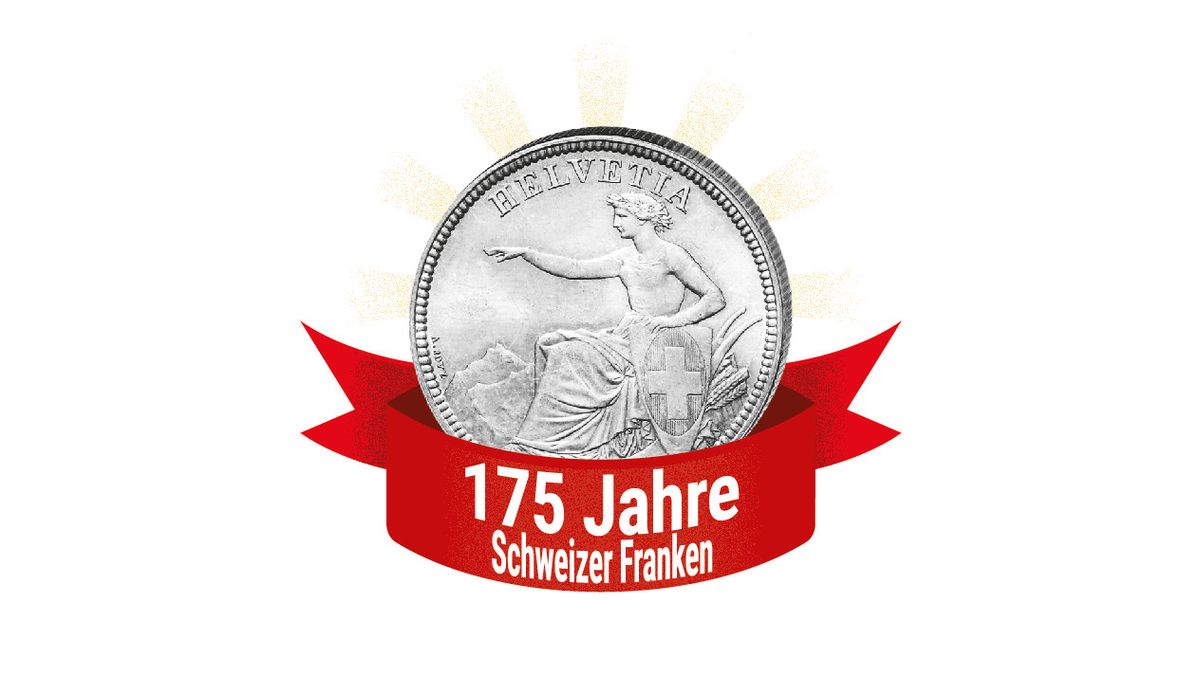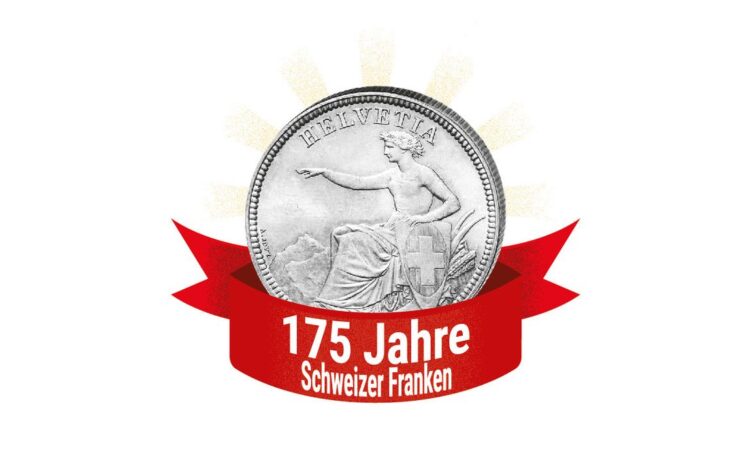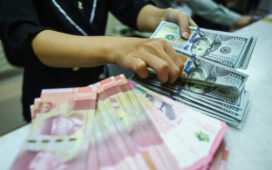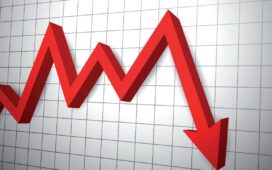The Swiss Franc turns 175
The world’s hardest currency
The Swiss franc is celebrating an anniversary. Once merely an appendage of the French franc, it has grown into the most solid player in the foreign exchange market. However, for both the country and its national bank, it is not always a stroke of luck.

Even though the franc has a reputation as a gold currency, it began its career backed by silver.
Münzkurier.de Emporium Hamburg/Marco Tancredi
On May 7, 1850, the franc became Switzerland’s national currency. Its success story, making it the world’s most secure and sought-after currency, was not predetermined. Already under Napoleon Bonaparte, who occupied Switzerland five decades earlier, there were initiatives that ultimately failed. The cantons defended their right to mint coins, leading to a proliferation of different currencies like Rappen, Taler, and Batzen.
When the federal state was established in 1848, calls for a national currency grew louder. However, it was clear that unilateral national efforts would be avoided. Rather, Switzerland would attach itself to one of the large existing currencies. This decision was driven by practical reasons. At that time, banknotes played no role; everything revolved around coins and their precious metal content, known as the coin standard, which was defined differently in the major currencies of the franc and the gulden.
A heated political dispute ensued. According to historian Andrej Abplanalp of the Swiss National Museum, a currency divide ran through Switzerland at that time. Eastern Switzerland and Zurich fought for the adoption of the South German gulden standard, while the Romandie, Bern, and Basel pushed for the French decimal system.
The latter prevailed. In retrospect, this turned out to be a wise decision, as the gulden soon faded into insignificance, replaced by the mark when the founding of the German Empire in 1871 ushered in efforts for a new unified currency in Germany as well.
From coins to notes
Though the franc has the reputation of being a gold-backed currency, its journey began with silver backing. It was defined like a French franc, whose value was set against a fixed quantity of silver. Gold coins were only introduced later.
The first seventy years were tumultuous. The period began with excessive – largely sexist – public criticism of the depiction of Helvetia on the coins. The Latin Monetary Union, which included the franc from 1865, also showed signs of wear.
The monetary union, initiated by Napoleon III and including France, Switzerland, Italy, and Belgium, was in many aspects a precursor to the euro but failed to function properly. It periodically led to cash shortages and systematic arbitrage between Swiss banknotes and silver coins.
For decades, politicians attempted to control the free issuance of essentially private banknotes. Initially, they restricted the right of issuance to joint-stock banks and cantonal banks, then the federal government was granted a monopoly. This was fully regulated by the National Bank Law in 1905, and the newly founded Swiss National Bank (SNB) opened its doors two years later.
The path to a safe haven
Even then, peace was not fully restored. However, in the following decades, the franc’s status changed. Economic historians Harold James and Michael Bordo identify the Great Depression and specifically the international devaluation wave of the mid-1930s as pivotal.
When France devalued the franc by a third, the SNB mirrored this move. However, when Paris devalued its currency again a year later, the SNB did not follow. The direcorate informed the Federal Council that there was no economic or psychological link between the two currency areas justifying a unified exchange rate policy.
«Other countries envy Switzerland. Yet the franc is almost always on the brink of being overvalued.»
The SNB had gained independence. The key to monetary policy no longer lay in the adoption of neighboring standards or the obligation to follow the French franc. Instead, there was a newfound appreciation of stability as an intrinsically valuable asset, argue the researchers.
Economists Ernst Baltensperger and Peter Kugler assert that the franc became a safe haven even two decades earlier. This refers to the franc’s reputation as a refuge currency, sought after by investors worldwide in times of crisis, a reputation that persists to this day.
Only until 1914, the outset of the First World War, was the franc a regular currency that appreciated and depreciated against its competitors. Thereafter, what is now immovable was established: Switzerland and the franc as an interest rate haven with relatively low interest rates compared to international standards.
A challenging seal of quality
This is a quality certificate built on multiple solid pillars, including the globally unique political and social stability as well as the prevailing practiced liberalism that enables a market-oriented and simultaneously socially balanced economic system. Low national debt, high gold reserves, current account surpluses, and net foreign assets further cement the franc’s reputation as fundamentally solid in the global exchange market for decades.
Rightly so, other countries envy Switzerland for this. But in everyday life, handling the safe-haven status is tricky. The franc is almost constantly on the verge of being overvalued. Businesses are compelled to remain competitive. For decades, the national bank has been in continuous operation to prevent worse outcomes.
In the 1970s, currency watchdogs sought refuge in negative interest rates. The measures were drastic: up to 10% per quarter on all foreign franc deposits were imposed.
Currency neighbors put pressure on the franc. Italy, for instance, devalued whenever economic woes hit. EU states experimented with several currency systems to bind exchange rates to each other, without success. Until 1999, when the euro was introduced, replacing lira, franc, peseta, etc.
At that time, SNB President Jean-Pierre Roth hoped that the euro, as a kind of successor to the Deutsche Mark, would herald more peaceful times for the franc. He mentioned that a reduction in the franc’s significance as a financial investment and an increase in its relevance as a “normal currency” would be welcomed.
Initially, it appeared so. Until 2008, when the global financial crisis erupted and shortly thereafter the euro sovereign debt crisis. The franc lived up to its reputation as a refuge currency and appreciated massively.
Currency expert Peter Bernholz wrote in Finanz und Wirtschaft, reflecting on the past, that the SNB had long been navigating between an overvaluation of the franc and expanding reserves. Henceforth, it decidedly opted for the latter. Increasingly extensive forex purchases, the temporarily applicable minimum exchange rate of 1.20 CHF/€ and, subsequently, negative interest rates dominated Swiss monetary policy. Everything was driven by the premise to tame the franc.
A new doctrine
Starting in 2016, the USA placed Switzerland on its watchlist of countries engaging in currency manipulation and threatened with sanctions. Yet, such claims are factually incorrect. The SNB resists appreciation shocks that could harm the economy but it does not weaken the franc to give exporters an edge.
In fact, a new franc doctrine has been effective for about a decade. The SNB shows greater tolerance towards nominal appreciations so long as foreign inflation outpaces domestic inflation. The real exchange rate takes precedence, aiming for as much stability as possible. To date, this approach has been successful. Over the past five years, the franc has not appreciated in real terms. While this is no guarantee for the future, it demonstrates the SNB has found a viable strategy for managing the world’s hardest currency.
Fehler gefunden?Jetzt melden.






